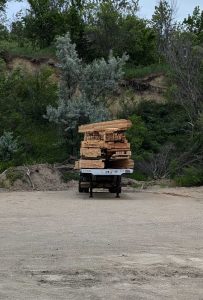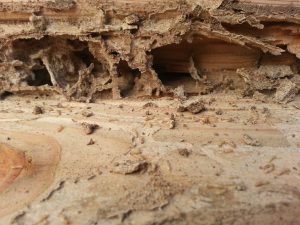Hansen Pole Buildings’ Designer Dave Gross sent me this note recently: “I have a client questioning steel versus wood. I have gone through the blogs and discussed the pros and cons with client. Her main comeback is wood rot and bugs in South Carolina.
She is a sharp cookie. 30 year business owner. Just built her 4500 SF house and was the GC on it. She is direct and wants the truth.”
Dave was certainly right in sharing some of my articles with his client. Among these would be why wood decays to begin with: https://www.hansenpolebuildings.com/blog/2011/07/how-untreated-wood-decays/ and what the Code requirements are for pressure preservative treated wood: https://www.hansenpolebuildings.com/blog/2012/10/pressure-treated-posts-2/
One of the questions I posed of Dave was, did your client happen to build her house out of all pressure preservative treated wood? Of course the answer was “no”.
Wood is an inherently durable material which is resistant to most biological attack provided it remains dry. However prolonged wetting leads to a risk of decay by wood rotting fungi. Various insects also use wood as a food source.
“Dry Rot” is a term most often used to describe a particular kind of dry, cracking, rotting wood. However, dry rot occurs because of a variety of brown rot species, most notably the “true” dry rot fungus known as Serpula lacrymans. It originally got its name from the thought that it did not need water to survive and used a fermentation process to survive. Research has long since been proven untrue, and it is now called, more appropriately, “brown rot“, although the old name hangs on. Dry rot needs much less moisture than other types of wood rotting fungi–a wood moisture content of at least 28-30% — to survive.
 The solution to wood rot problems is to prevent it from ever starting – the use of properly pressure preservative treated lumber in critical areas can reduce or altogether eliminate the potential for insect and fungal decay.
The solution to wood rot problems is to prevent it from ever starting – the use of properly pressure preservative treated lumber in critical areas can reduce or altogether eliminate the potential for insect and fungal decay.
And yes, Hansen Buildings uses lumber which is treated to UC4B standards for all structural in ground use.
Read more about this here:
https://www.hansenpolebuildings.com/blog/2012/10/pressure-treated-posts-2/









